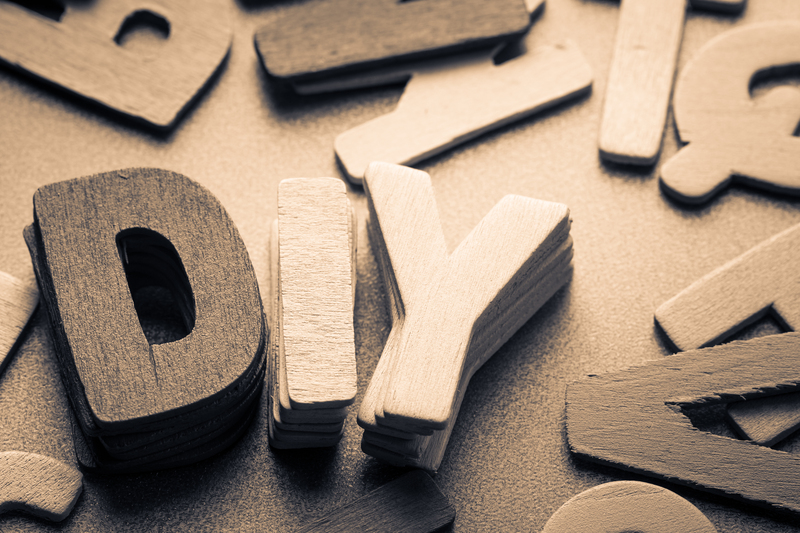Eco-Friendly Disposal for Your Cookware: A Comprehensive Guide
Over time, every kitchen accumulates worn-out pots, scratched pans, and broken baking sheets. While most of us simply toss our old cookware in the trash, this practice poses a real threat to the environment. Eco-friendly disposal for your cookware is not just a trend--it's a responsibility that every household should adopt. In this all-inclusive guide, we'll explore the best practices for sustainable cookware disposal, plus creative ways to give your old kitchen items a second life.

Why Does Responsible Cookware Disposal Matter?
Traditional cookware made from materials like aluminum, stainless steel, cast iron, non-stick coatings, and ceramics can have a significant impact on landfills and the environment. By opting for green cookware disposal options, you're reducing landfill waste, preventing chemical leaks, and preserving valuable resources. Here's why eco-friendly disposal matters:
- Environmental Protection: Cookware can leach chemicals and metals into the soil and water.
- Resource Conservation: Many pots and pans contain valuable metals that can be recycled and reused.
- Reducing Landfill Overflow: Kitchenware can take centuries to decompose, filling up precious landfill space.
- Community Impact: Reusing or donating functional items benefits those in need.
Understanding Cookware Materials and Their Disposal Methods
To dispose of your kitchenware in a sustainable and environmentally friendly manner, it's important to identify its material. Here's a breakdown of common materials and how they can be recycled or reused:
Stainless Steel and Aluminum Cookware
*Metals like stainless steel and aluminum are highly recyclable.* Check your local recycling guidelines to determine if they accept these items. Typically, metal cookware should be dropped off at scrap metal recycling centers or specific collection events rather than placed in curbside bins.
- Remove all plastic, rubber, or wooden handles before recycling.
- Check for any non-stick coatings; some recycling centers require pans to be stripped of these layers.
- Tip: Call your local transfer station or recycling depot to confirm drop-off procedures.
Cast Iron Pans
Cast iron, known for its durability, is 100% recyclable. If your skillet is rusted or cracked:
- Recycle it at a metal scrap yard.
- Consider restoration: Sometimes, professional seasoning and reconditioning can give a cast iron pan a new life.
Non-Stick and Teflon-Coated Cookware
Disposing of pans with non-stick surfaces is more challenging, as Teflon and similar compounds can't be recycled with ordinary metals due to their chemical properties. For eco-friendly cookware disposal:
- Check if your community runs specialized recycling programs for non-stick pans.
- Contact the manufacturer--some brands, like Calphalon or GreenPan, offer take-back and recycling programs.
- Avoid sending to landfill if possible, as non-stick coatings can break down and seep into soils and groundwater.
Ceramic and Glass Cookware
Standard curbside recycling often does not accept ceramics or heat-treated glass, such as Pyrex. Limit your environmental footprint by:
- Contacting local art studios or schools--broken ceramics make excellent mosaic materials!
- Repurposing them for garden projects, such as plant trivets or stepping stones.
- Looking for municipal recycling events that accept ceramics and glassware.
Copper Pans
Copper is one of the most valuable metals for recycling--never discard it in the trash!
- Take to a reputable scrap metal dealer.
- Some recycling centers pay a premium rate for copper items.
Plastic, Silicone, and Wooden Kitchenware
Items like spatulas, mixing spoons, and some non-stick bakeware may be made from plastic, silicone, or wood. Recycling options include:
- Check product labels for recycling codes or manufacturer take-back programs.
- Compost untreated, natural wooden utensils.
- Donate food-grade silicone items for reuse if they are in good condition.
Creative Ways to Repurpose Old Cookware
If your cookware isn't suitable for recycling or donation, upcycling is a great way to avoid landfill waste altogether. *Get creative and give your old pots and pans a new lease on life with these ideas:*
Planters and Flower Pots
Transform leaky or scratched pots into charming plant containers. *Drill a few holes for drainage, add soil, and you have a unique outdoor planter!*
Bird Feeders or Baths
Old mixing bowls or shallow pans can double as rustic bird baths or feeders, adding character and vibrance to your backyard.
Garden Tools and Decor
Handles, lids, and skewers from broken cookware can become artistic garden stakes, wind chimes, or even rustic wall hangings.
Household Organizers
Use muffin tins as desk organizers for stationery, or turn a frying pan into a quirky key holder.
Art and Craft Projects
Invite kids (or adults!) to create mosaic art with broken ceramics or paint old pans for decorative displays.
Donating Usable Cookware
Many people get rid of cookware that's still functional simply because of style changes or minor scratches. Donating your gently used pots and pans is one of the most eco-friendly cookware disposal options available.
- Check with local donation centers, thrift stores, food banks, or shelters.
- Clean and sanitize all items before donating.
- Some online platforms like Freecycle and Buy Nothing groups facilitate direct giving to those in need.
Manufacturer Take-Back and Recycling Programs
Some leading cookware brands have stepped up their commitment to sustainability by offering take-back and recycling programs. Here's how it works:
- Check the manufacturer's website for details.
- Some provide prepaid shipping labels or in-person drop-off locations.
- Examples: Calphalon's "ReNew" program, GreenPan's cookware recycling, and IKEA's metal recycling bins.
How to Prepare Cookware for Disposal or Recycling
Prior to recycling or donating, it's essential to follow these steps for eco-friendly cookware disposal:
- Clean Thoroughly: Remove food residues, oils, and stains.
- Disassemble: Take off any plastic, wooden, or rubber parts whenever possible.
- Sort by Material: Group items for metal, ceramic, and other recycling streams.
- Check Local Guidelines: Different municipalities have unique recycling protocols.
- Secure for Transport: Wrap sharp edges and pack items safely to avoid injury or spillage.
The Do's and Don'ts of Green Cookware Disposal
Do:
- Contact local recycling depots or municipal hazardous waste centers for advice.
- Research manufacturer programs for take-back or recycling options.
- Donate or repurpose cookware whenever possible to reduce waste.
Don't:
- Throw non-stick or Teflon cookware in general recycling bin unless accepted by your facility.
- Discard copper or valuable metals--recycle them appropriately.
- Burn or incinerate any cookware, as coatings may release toxic fumes.
- Forget to clean and separate parts before recycling or donating.
Local Solutions for Eco-Friendly Cookware Disposal
Every community is unique. Here's how to find local resources:
- Contact Your Municipality: Local government websites often provide recycling guidelines and event information.
- Use Earth911: Earth911.com helps locate nearby recycling facilities for specific cookware materials.
- Search for Scrap Yards: Use apps like iScrap or local directories to find metal recyclers.
- Consult Online Forums: Community message boards (Reddit, Facebook groups) often share local recycling and donation leads.
Frequently Asked Questions About Sustainable Cookware Disposal
Can non-stick pans be recycled?
*It depends on your municipality.* Standard curbside programs generally do not accept non-stick cookware because of its chemical coatings. However, many scrap yards or specific programs handle Teflon pans--always check first.
Can I put old pots and pans in curbside recycling?
Usually, no. Curbside recycling is designed for smaller metal items, not bulky or coated cookware. Take your items to a specialty collection point instead.
Are there any brands that recycle cookware?
Yes! Brands like Calphalon and GreenPan offer take-back programs for their products and sometimes competitors' items. IKEA also supports metal recycling in many stores.
What should I do with broken ceramic or glass cookware?
Repurpose broken pieces for crafts or garden mulch, or bring them to specialty recycling events.

Conclusion: Make Eco-Conscious Choices for Disposing of Your Kitchenware
Adopting eco-friendly disposal for your cookware is essential to protecting our planet and conserving valuable resources. Whether you recycle metal pans, upcycle old pots into planters, or donate usable kitchenware to those in need, every small action contributes to a healthier environment.
Remember: Before tossing out cookware, learn about your local recycling rules, explore donation opportunities, and get creative with upcycling projects. With a little effort, you can ensure your cookware's end-of-life journey is as sustainable as possible.
Resources for Further Reading
- Consumer Reports: What to Do with Old Pots and Pans
- Earth911: Find Recycling Locations Near You
- GreenPan: Cookware Recycling Program
- Calphalon: ReNew Program
Choose sustainable methods for eco-friendly cookware disposal and help shape a cleaner, greener future--one pan at a time!